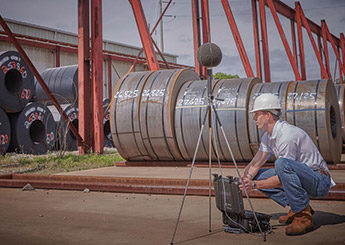Noise-monitoring innovations
What are the latest ways to measure environmental noise?

Responding is Luke Allen, chief sales officer, OHD Inc., Hoover, AL
Environmental noise monitoring traditionally has been limited to main communication methods or manual downloads. These methods require physical presence at the instrument and the ability to access the instruments easily. As technology continues to advance, many of the connectivity methods have opened the door for advancements in measuring environmental noise. These advancements also reduce the need for physical presence and open the door to remote connectivity around the world.
The first advancement is Wi-Fi compatibility with environmental noise instruments. These instruments can be remotely staged inside or outside a facility and connected throughout the day via a Wi-Fi connection. With a strong connection, operators can access the GPS coordinates of the instrument, download measurement data and listen through the instrument on a 5- to 10-second delay. With this form of connectivity, reporting and real-time data is easily captured or monitored. The drawback to Wi-Fi solutions is the variability of signal strength and distance at which instruments can be placed.
The second advancement is 3G modem connectivity. All of the aforementioned benefits of Wi-Fi connectivity apply to 3G modem, including remote download of measurement criteria and listening through the instrument, as well as GPS location of an instrument. In addition, 3G modem connectivity allows for extreme remote placement of instruments. Connection to the instruments will be based only on the signal strength of the providing carrier.
In scenarios in which instruments need to be placed in areas of limited access or housing communities, 3G modem connectivity is hard to beat. Many times, remote instrument installations will use solar power panels to provide drip charges to a permanent battery pack for the instruments. With the ability to place instruments remotely, this connection option also allows for alerts through social media outlets, SMS and emails.
For specific instruments, operators can set up email addresses, cell phone SMS alerts and/or Twitter handles to be notified at certain noise levels or “trigger” levels. For example, “if 85 dBA for three seconds or longer, send an email to ,” or “if 90 dBA at any point, send a tweet on this Twitter handle.” These environmental monitors can immediately update safety professionals, plant managers or neighborhood association organizations of noise level alerts.
Through the 3G modem option, instruments can be set to record the actual noise at set durations preceding the triggered level for playback. The playback of actual noise events with captured noise before the trigger allows professionals to determine what took place to cause the noise trigger.
The final advancement is further development of software functions for day-to-day use of instruments rather than data management only. Many legacy software packages simply manage data or generate reports, but a number of packages now allow instruments to be customized by the operator. Operators can set calendar functions for specific instruments to allow for noise threshold triggers to change based on time of day, weekday versus weekend, a specific date or a combination of these. An example of this would be a plant with operating hours of 8 a.m. to 5 p.m. EST: The safety professional would like to be notified via SMS if noise exceeded 85 dBA at any point during the day, but after 5 p.m. the safety professional would like that notification to be turned off. Through calendar functions, individual instruments can have these detailed settings running automatically once set without any ongoing maintenance from the safety professional. As environmental noise regulations continue to tighten, these features will allow safety professionals to better manage, record and alert specific contacts when noise levels are exceeded.
Editor's note: This article represents the independent views of the author and should not be construed as a National Safety Council endorsement.
Post a comment to this article
Safety+Health welcomes comments that promote respectful dialogue. Please stay on topic. Comments that contain personal attacks, profanity or abusive language – or those aggressively promoting products or services – will be removed. We reserve the right to determine which comments violate our comment policy. (Anonymous comments are welcome; merely skip the “name” field in the comment box. An email address is required but will not be included with your comment.)

